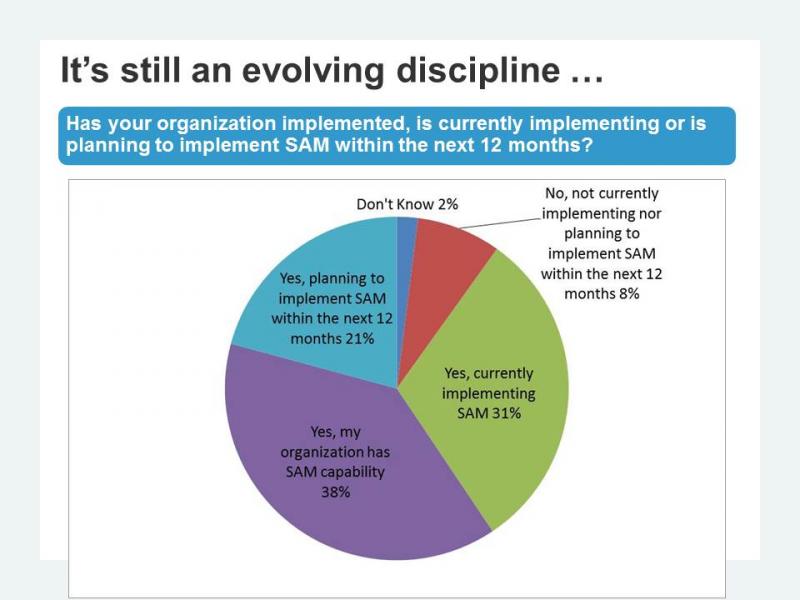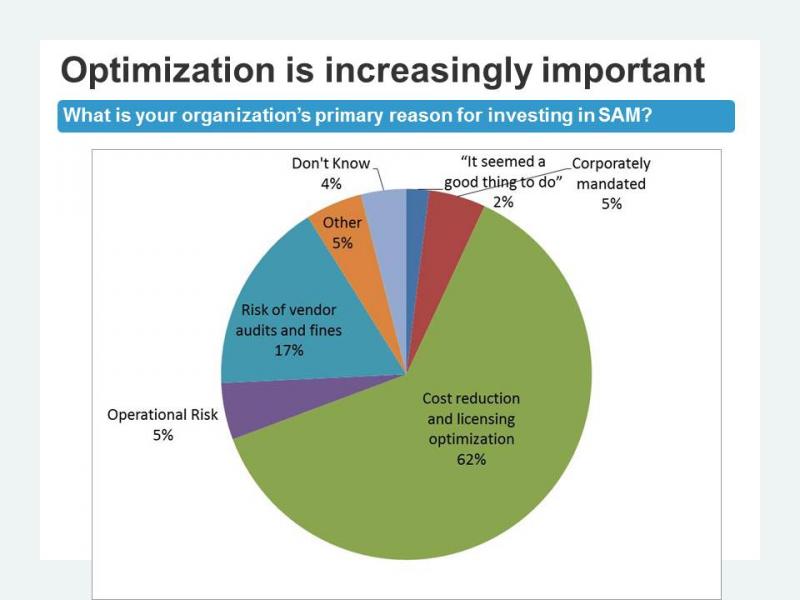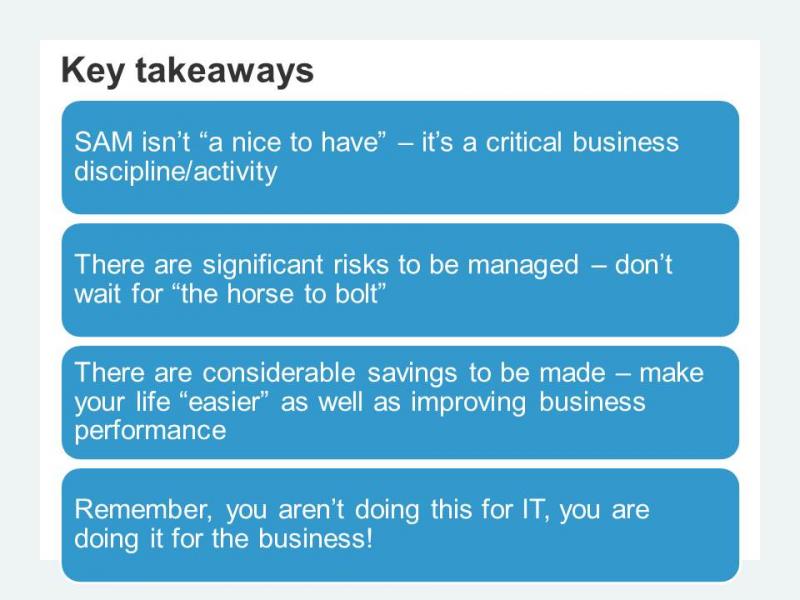The Rise, Fall, And Rise Of Software Asset Management: It’s More Than Just A “Good Thing To Do”
To describe software asset management as “red hot” right now might be an overstatement, but it is definitely at the top end of very warm. Three things have spurred me to write this quick blog:
- The growing number of Forrester client inquiries – unlike with IT service management (ITSM) where most relate to tool selection, these inquiries are very much about “getting started.”
- A recent webinar with CA Technologies where my somewhat “SAM 101” presentation seemed to be very well received: https://www.brighttalk.com/webcast/6505/60233 (registration required).
- Jon Hall, of BMC, published an IT asset management (ITAM)-related blog (Let’s work together to fix ITAM’s image problem) in which he shares not only his insights but also what I would call “BMC IP” – what Jon calls an asset management benchmarking worksheet.
The ITAM world needs more sharing of successes and good practice, whether it be sponsored webinars or “information gifts” such as the one from Jon. Dare I say it … the lack of publicly available good practice in the ITAM world shows what a great help ITIL (the ITSM best practice framework) has been to its world.
SAM: The State Of The Nation
I’m currently working on three SAM-related reports (one of which is very late, my apologies), including one with The ITAM Review … again a great source of shared, you could even say community-driven, information. So a few stats from the joint ITAM Review/Forrester SAM survey before the people that are far more creative than me turn these and others into sexy infographics:
Figures 1 and 2


Figure 3

A Very Quick Analysis
Figures 1 and 2: SAM is still an emerging discipline, but it is on the agendas of many organizations (I appreciate that the survey will have significant bias due to the fact that it is about SAM – if you were not interested, would you take the time to complete it?). It also makes me wonder if those organizations that have “done” SAM for over 10 years have great success stories to tell.
Figure 3: Just look at the main driver – cost reduction and licensing optimization, at 62%. How many think of this when they think of SAM? Not enough in my opinion – 10 years ago it was definitely about compliance, so it is good to see a maturation of thinking in this area. While compliance is still of great importance (well in fact a legal imperative and software vendor audits are increasing), SAM should also be a part of your IT organization’s and business’s efficiency activities. As I say in Figure 4, SAM is not an IT issue/opportunity; it’s a business issue/opportunity.
Figure 4

Finally, just to increase the chances of you looking at and benefitting from Jon’s “information gift,” here is a direct link.
As always, your thoughts and observations are appreciated.